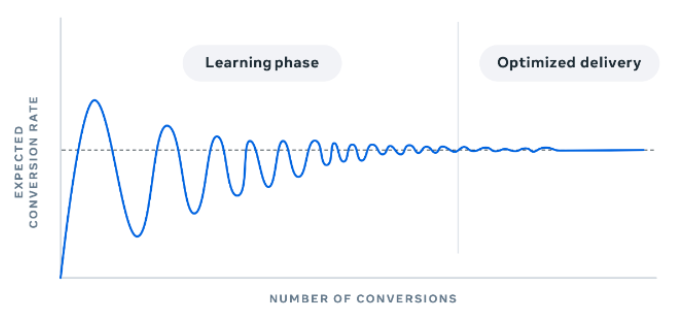Many of our clients are asking, “What’s the next big thing in social media?” And, with Meta continuing to be the biggest platform in paid social, we’re testing new tactics and creative styles to help our clients stand out amongst the vast majority of ads out there.
One of the biggest things we see advertisers doing – which we’re advising against – is adjusting your campaigns at the first sign of slow performance, usually one bad day of results. Digital marketing is often characterized by its constant quest for instant results – but if we take a step back, we see that bigger things are at play.
Stability Over Quick Changes: Listen to Meta
In a world of constant updates and fast-paced shifts, it may be counterintuitive to recommend a reduced frequency of ad account and campaign changes. However, there's wisdom in aligning with what larger trends tell us to do. Meta's algorithms require time to work, and rushing through changes might undermine the intricate mechanisms designed to enhance your advertising efforts.
Also, consider consumer behavior. While we're living in an era of instantaneous gratification, thoughtful consumer engagement takes time. A purchase decision isn't always immediate; people often need time to consider purchase decisions. It's a journey that requires some nurturing, even for products usually categorized as “impulse purchases.”

But what do you do when your campaign isn't performing as expected? The knee-jerk reaction might be to make immediate changes, but there's another way. Embrace iterative testing and optimization. Instead of abandoning ship at the first sign of trouble, gather data, analyze results, and make informed adjustments over time. This systematic approach often yields more consistent and reliable results than rapid, uninformed changes.
The Meta-Learning Phase
When a campaign starts running, each ad set goes through the learning phase. Simplifying the account structure helps Meta’s algorithm get you the results you need faster. This is especially important during holidays when campaigns tend to be shorter, like Black Friday/Cyber Monday weekend (4 days).
The graph below shows how CVR gets dialed in as Meta learns who is most likely to convert with the new targeting, optimization, creative, copy, or anything else you adjusted that then sent the ads back into the learning phase. Time + Conversions is the key to stability on Meta, not rapid changes. Meta thrives in consistency, not volatility.

Faster Learning To Maximize Results
To help exit the learning phase as quickly as possible (50 conversions in a 7-day period), here are some best practices.
Limit the number of ad sets you have in each campaign
This will not only help you collect more data quicker but also help keep your CPMs (cost per 1,000 ad impressions) down, which can have a positive impact on your ROAS. The lower it costs to show your ad, the lower your CPA can be. Consolidation helps your CPM because Meta has a larger pool of people to choose from in the ad set, so Meta can go after the person most likely to convert at the lowest cost.
Max # of Ad Sets = Total weekly budget / (Average CPA x 50)
Look for additional consolidation opportunities
Stacking audiences in one ad set is a popular way to consolidate
- Stack similar interests & behaviors in one ad set
- Stack similar Lookalike audiences (ex: LAL-Past Purchasers, LAL-Multi Purchasers, and LAL-High AOV purchasers)
- Stack Prospecting and Retargeting audiences if your purchase funnel is quite long, as consumers will need multiple touchpoints before they convert
Group significant edits together to avoid restarting the learning phase
Instead of making a change each day and restarting the learning phase constantly, bundle multiple changes together. Budget changes +/- 20%, audience shifts, and creative updates (new headlines, ad copy, and images/videos) all restart the learning phase. If you need to update your ads, try to make all of your changes at the same time so your ads can run and optimize from there. Meta reports that ad sets that exit the learning phase have 28% lower cost-per-purchase metrics.